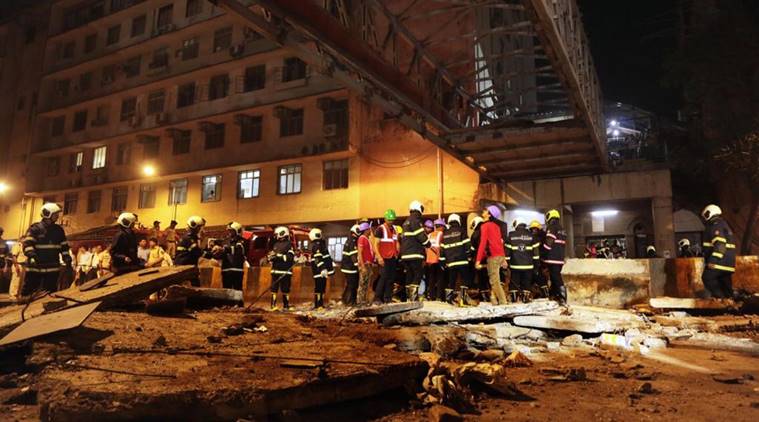
A double tiling work, without strengthening iron beams and girders, could be one of the reasons that led to the collapse of the foot overbridge (FOB) at CSMT on Thursday, Brihanmumbai Municipal Corporations (BMC) officials suspect.
In 2016, under the Swachh Bharat Abhiyan, the BMC had carried out tiling and painting work for the beautification on the FOB, without any repair works.
“There is a possibility that the double tiling weakened the iron beams and it could be one of the factors that led to the collapse,” a source in the BMC said.
The source said that new tiles were placed on the old, existing tiles. “This means live load was added on dead weight. This added more weight on the structure, beyond its capacity. Since the bridge is used by thousands of commuters and is one of the busiest FOBs in the area, additional load of tiles without strengthening the base of the bridge could have affected the structure,” the source said.
The probe report on the 2018 Gokhale bridge collapse, sources said, had also blamed additional loads as one of the reasons for accident. Report stated: “The failure of the ROB (Road Overbridge) was contributed by additional load of sand, paver block, cables etc. These additional loads were not considered at the time of original design.”
Meanwhile, a BMC official, without wishing to be named, said the initial plan was “only to carry out painting work (on the CSMT FOB), but later tiling was also undertaken”. The civic body had spent about Rs 14 lakh on the painting and flooring work.
On Thursday, BMC officials had said that prima facia it seemed that the one of the iron cross-beams of the FOB had given away and led to the slab collapse. “The beams looked corroded and one of the joints looked broken,” they had said.
Opposition leader Ravi Raja also alleged that the tiling work could have weakened the structure.
“The BMC had put more weight on the bridge without ensuring that proper repair work. The additional flooring damaged the structure,” he said.
A structural audit report submitted on August 6, 2018, had called the CSMT FOB — which collapsed on Thursday claiming six lives and injuring 31 others — to be in “good condition”. The survey report had read: “The FOB is in a fairly good condition.”
A brief description of the fault and the recommendations for its repair stated: “concrete slabs showed effect of corrosion” and “cracks are formed in concrete railing”. The inspection of the bridge was undertaken on July 4, 2018.
Interestingly, the consultant had mentioned the year of construction of the FOB to be 1998, when the Himalaya bridge was constructed between 1984-86.
Nearly 35 years old, the FOB was structurally repaired in 2012-14. RPS Infrastructure Private Limited had then carried out structural repairs, such as polymer modified mortar, epoxy painting, structural steel work and SS hand railing.
Three separate consultants were appointed to survey 296 structures comprising of FOBs, bridges, ROBs for over a cost of Rs 2 crore in 2016. Out of the 296 surveyed, 110 were found in good condition (including the CSMT bridge), 107 required minor repairs, while 61 required major repair and 18 needed demolition and reconstruction.